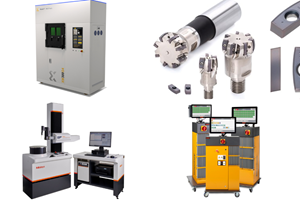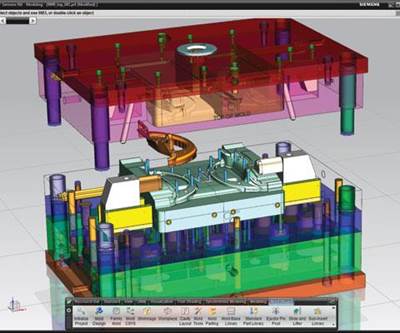Thrive on New Market Opportunities
How the right manufacturing engineering software enables diversification.
Thriving manufacturing businesses tend to take advantage of the right market opportunities, just when they present themselves. Examples of such opportunities could be establishing a new customer in a different regional market (maybe a different country), adding a product line from an industry in which you don’t already do business or creating a niche market by making the most of a core competency.
Diversifying into new product lines and industries is one strategy that has helped numerous North American manufacturers to grow their businesses, but it comes with many challenges. Even so, a common theme emerges in many of these companies’ success stories: software plays an important role. In this article, we’ll explore how the right software can help you meet those challenges and take advantage of new opportunities to diversify and grow your business.
Get More from Existing Machining Resources
As budgets tighten, the lack of finances to purchase additional machines often prevents a manufacturer from diversifying. However after close analysis, many shops discover that they aren’t running their machines to the fullest capacity. Time spent setting up jobs, performing try-outs and test cuts, and running inefficient NC programs all steal from productive up-time. And this doesn’t even include all of the time wasted searching for the correct information in the shop’s data systems.
The right software can help free-up the time needed to optimize machining operations so machines run more efficiently—and the results can be significant. Let’s say you have 15 machines and they’re each running at 45-percent capacity, and then you’re able to increase their capacity to 55 percent (10 percent on each machine). That’s equivalent to adding one new CNC machine to your shop!
To free up time for optimizing programs, you can use NC programming automation to capture and reuse your shop’s proven processes. Feature-based machining (FBM) lets NC programmers teach the CAM system to recognize features and then automatically creates the right machining operations (selects operations, cutting tools and creates valid toolpaths). More advanced CAM systems can apply FBM to more than just holes, but also to pockets, turning and wire EDM features. Depending on the part, FBM can reduce programming time up to 80 percent by automating routine tasks. The time-savings can be applied to further optimize programs for more efficient cutting and faster throughput.
Machining templates and wizards are additional examples of programming automation. Machining templates allow NC programmers to capture and reuse company best practices in a process to achieve faster, repeatable NC programming while requiring less programming expertise. Senior programmers can capture a sequence of steps in a wizard (think printer setup wizard) that can later be used to guide a user through the NC programming process, step by step.
Take on More Complex and Higher Value Jobs
One approach to diversification is to establish a market niche by taking on more complex and higher value jobs. This usually requires 1) freeing up resources to take on an additional workload (we discussed a few approaches to accomplishing this above) and 2) specialized know-how and the resources to handle the added complexity.
The added complexity usually translates into the ability to command a higher price, but it doesn’t always add up to higher margins because of the additional overhead required. Highly complex parts with hundreds (if not thousands) of surfaces that need to be machined, or massively complex molds that consist of hundreds of components can be more than most CAD/CAM systems can handle. When this is the case, either the software falls short of accomplishing the task or the user must resort to time-consuming “work-arounds” that can push the project over the estimated cost and completion date.
When mold assemblies get massive, some CAD/CAM systems have trouble loading and displaying the data due to memory management issues. Software systems that support 64-bit processors can handle the larger assemblies more effectively than 32-bit systems. Graphics display performance is also important to consider. Spinning, zooming and clicking on parts in large assemblies needn’t respond sluggishly. Software systems can implement clever graphics display techniques to make sure the system remains responsive—such as displaying only the finer details of the work parts while simplifying (tessellating) the display of the rest of the assembly in the background.
Complex-shaped parts with a large number of surfaces can create challenges for NC programmers if the CAM system doesn’t provide tools for managing large toolpaths. Systems with 64-bit support come in handy for generating large toolpaths since they are able to manage the memory needed to calculate and output a result. Other capabilities such as parallel toolpath processing can reduce calculation time by as much as 50 percent by taking advantage of multiple cores/processors to generate operations in the background while you continue to work.
The more complex a project, the more it becomes prone to error. Integrated mold simulation tools are useful for validating that plastic part and mold tooling designs are done correctly, and for optimizing their performance. You can design better plastic parts by accounting for material flow characteristics that can affect injected molded part quality. You can also validate the mold’s design by using full 3D kinematic motion analysis with interference and clearance checking. Mold designs can be optimized by simulating material flow through the mold cavity to achieve optimum fill and cooling times.
Similarly, integrated machine tool simulation and verification tools can help achieve right first time at the machine tool—by detecting problems in the CAM system before they can get to the shop floor. Integrated simulation allows the programmer to check toolpaths in the context of the complete machine assembly without leaving the programming environment. If the CAM system is capable of displaying machine motion with full material removal and driven from the actual G and M code of the postprocessor, you can expect a highly accurate representation of the machine’s performance and avoid try-outs and testing on the shop floor altogether.
Manage Regulatory Compliance
Another approach to diversification is to enter into a new market or industry—one in which you do not already do business. A potential obstacle to this approach is the extra burden of regulatory compliance, as is the case for many regional markets, and the medical and aerospace industries for example. While achieving compliant products and processes can add extra cost and time, the costs of non-compliance can be even higher. Non-compliant products can lead to legal actions, lost customers, fines and lost revenue, and even exclusion from doing business in a particular country.
With the proper software you can take control of regulatory compliance management by integrating it right into your CAD/CAM and operational processes with minimal impact on cost, quality and time-to-market. A product lifecycle management (PLM) software package is typically needed to accomplish this task. PLM systems can provide the necessary information and process management capabilities to ensure that your business can properly and securely work within the OEM’s integrated development environment and guidelines.
In highly regulated industries, OEMs typically go to great lengths to review, verify, audit and certify that a supplier’s processes and supplied components meet compliance requirements. For example, in the aerospace industry it’s not unheard of for an OEM to have an unsolicited visit to a supplier and request to see the toolpaths that were used to machine a particular part. For audits like this one, a PLM system makes it easy to look up the part and produce the associated technical data as well as all of the records and supporting documentation used to design, manufacture, produce and maintain it.
Optimize Your Manufacturing Business with PLM
As your business grows, it can become increasingly difficult to stay organized and streamlined. New customers and projects come with additional data and process requirements. Managing this information properly—having access to the right information at the right time in the right context—can be the difference in meeting or missing delivery promises.
Even though a manufacturer may use the best-in-class CAD/CAM software and the best equipment, they can still experience many operational issues if their data and processes are not managed and controlled properly. Leadtime, cycle time, part quality and accuracy, resource utilization and material wastage are all examples of operational metrics that can be impacted. Typical symptoms of ineffective data and process management in a part manufacturing environment are: time wasted searching for data, use of incorrect file versions, incorrect machine setups, incorrect cutting tools and under-utilized machines.
An integrated CAD/CAM/PLM system can help you address these symptoms by ensuring you use the right data (have it when and where you need it), manage the voice of the customer all the way through to execution on the shop floor, define and control the process, and maintain data and process security. To accomplish this, the integrated software system must manage information about what is to be manufactured, how it will be manufactured, with what resources and where. The typical types of data the system will need to manage include: part files, catalog parts, mold/die bases, NC files, shop floor documentation, tool lists, simulations, cutting tools and fixtures, and inspection programs—just to name a few.
Lastly, establishing a reliable process chain that connects design through production is also important for sustaining an optimal level of manufacturing performance. Today, companies are able to integrate PLM with shop floor equipment such as tool pre-setting devices so that the actual measured tool information is automatically noted in the work package shop documentation and sent to the machines. This ability to seamlessly connect work package from manufacturing planning directly to the shop floor and on to the point of execution is just one example of how integrated PLM can reduce machine idle times as well as minimize variations in quality and manufacturing errors. PLM systems also offer many additional capabilities such as change management, release management, traceability, process planning, task assignment and collaboration that play an equally important role in optimizing operations.
Summary
Diversification is one strategy that can help grow a manufacturing business, but it typically comes with challenges. The right CAD/CAM/PLM software system can help to overcome them.
The right software can help keep manufacturing operations streamlined while your business grows. It can help your business expand into new industries or regional markets by managing regulatory compliance. And it can help your business establish a niche market and take on new projects by providing tools to master complexity, ensuring jobs are done right the first time, and by making resources more efficient.
Related Content
How to Select a Mold Temperature Controller
White paper shares how cooling channel analysis, which collects maximum pressure drop, total flow rate and heat dissipation, eases the performance evaluation of mold temperature controllers.
Read MoreOEE Monitoring System Addresses Root Cause of Machine Downtime
Unique sensor and patent-pending algorithm of the Amper machine analytics system measures current draw to quickly and inexpensively inform manufacturers which machines are down and why.
Read MoreMMT Chats: Solving Schedule and Capacity Challenges With ERP
For this MMT Chat, my guests hail from Omega Tool of Menomonee Falls, Wisconsin, who share their journey with using enterprise resource planning (ERP)—and their people—to solve their schedule and capacity load monitoring challenges.
Read MoreProducts and Services for Multiple Moldmaking Needs
New year, new technology roundup! Featured here is a collection of product offerings, from profile milling cutters to industry-specific CAD/CAM software to innovative hot work tool steels.
Read MoreRead Next
Five Benefits of Integrated CAD/CAM
Integrated CAD/CAM software that combines CAD, CAM, electrode design and CMM programming capabilities in one system can save you time and effort in the following five ways:
Read MoreHow to Use Continuing Education to Remain Competitive in Moldmaking
Continued training helps moldmakers make tooling decisions and properly use the latest cutting tool to efficiently machine high-quality molds.
Read MoreReasons to Use Fiber Lasers for Mold Cleaning
Fiber lasers offer a simplicity, speed, control and portability, minimizing mold cleaning risks.
Read More
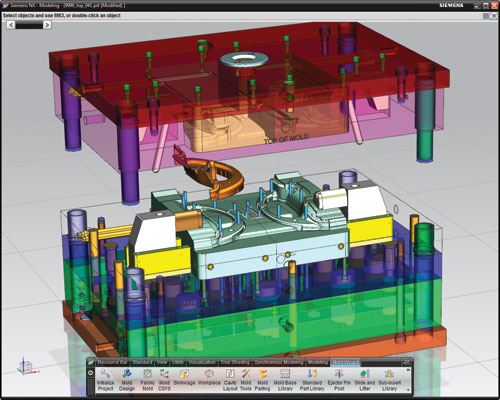
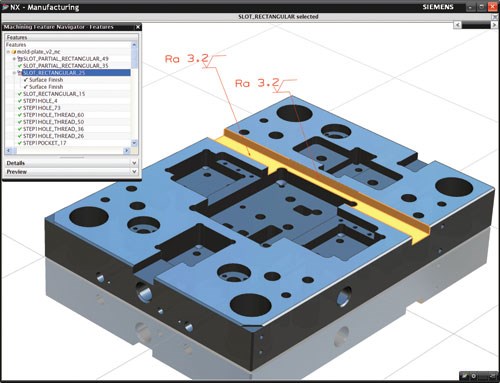

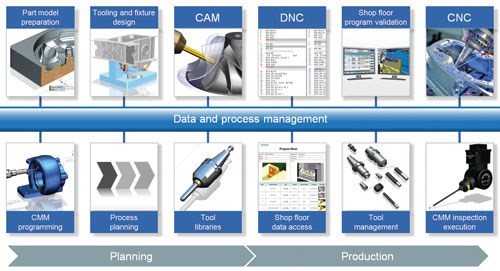
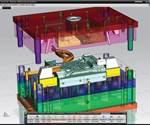




.jpg;maxWidth=300;quality=90)








